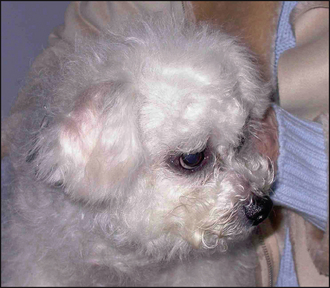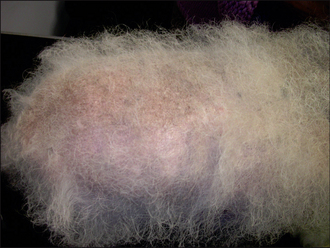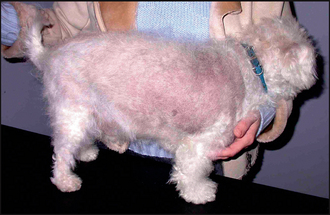13 Sebaceous adenitis
CASE HISTORY
The relevant history in this case was as follows:
CLINICAL EXAMINATION
There are substantial variations in the clinical appearance of sebaceous adenitis between breeds.
Longer-haired dogs present with variable scaling, alopecia and usually marked follicular cast formation (Fig. 12.4), and a fine silvery scale on the inner aspects of the pinnae is commonly seen in springer spaniels. Lesions can progress to large patches of broken hairs and tightly adherent scale. The pinnae, trunk, temporal region and tail tend to be affected in the early stages, but severe disease can result in generalized involvement.
Feline sebaceous adenitis is a rare disease characterized by multifocal annular areas of alopecia, scaling, crusting and follicular casts. Pruritus can be absent to marked, and tends to be more severe if there is secondary pyoderma.
The physical examination was within normal limits.
Examination of the skin revealed:

Figure 13.1 Sebaceous adenitis. Alopecia over the periorbital skin and adjacent to the nasal planum.

Figure 13.3 Sebaceous adenitis resulting in partial alopecia and discolouration due to follicular cast formation.
This was a diffuse, partial alopecia involving scaling and follicular cast formation. Follicular casts are made up of keratosebaceous material, and are literally a cast of the hair follicle lumen that forms a collar around the hair shaft and is extruded from the hair follicle as the hair grows (see Chapter 12). They represent follicular pathology, in particular follicular hyperkeratosis.
There are several diseases that can result in follicular cast formation and alopecia, including:
Stay updated, free articles. Join our Telegram channel

Full access? Get Clinical Tree



